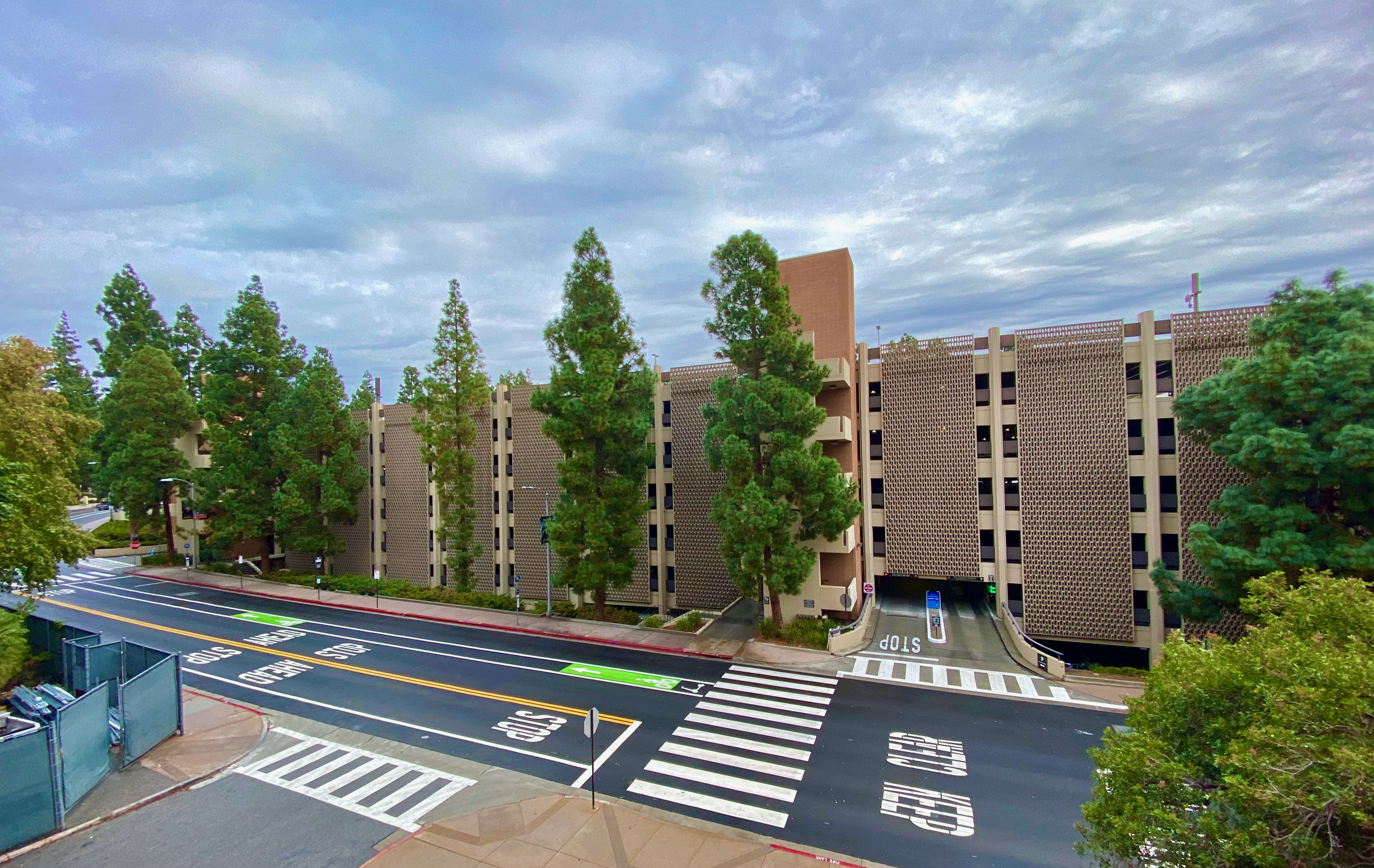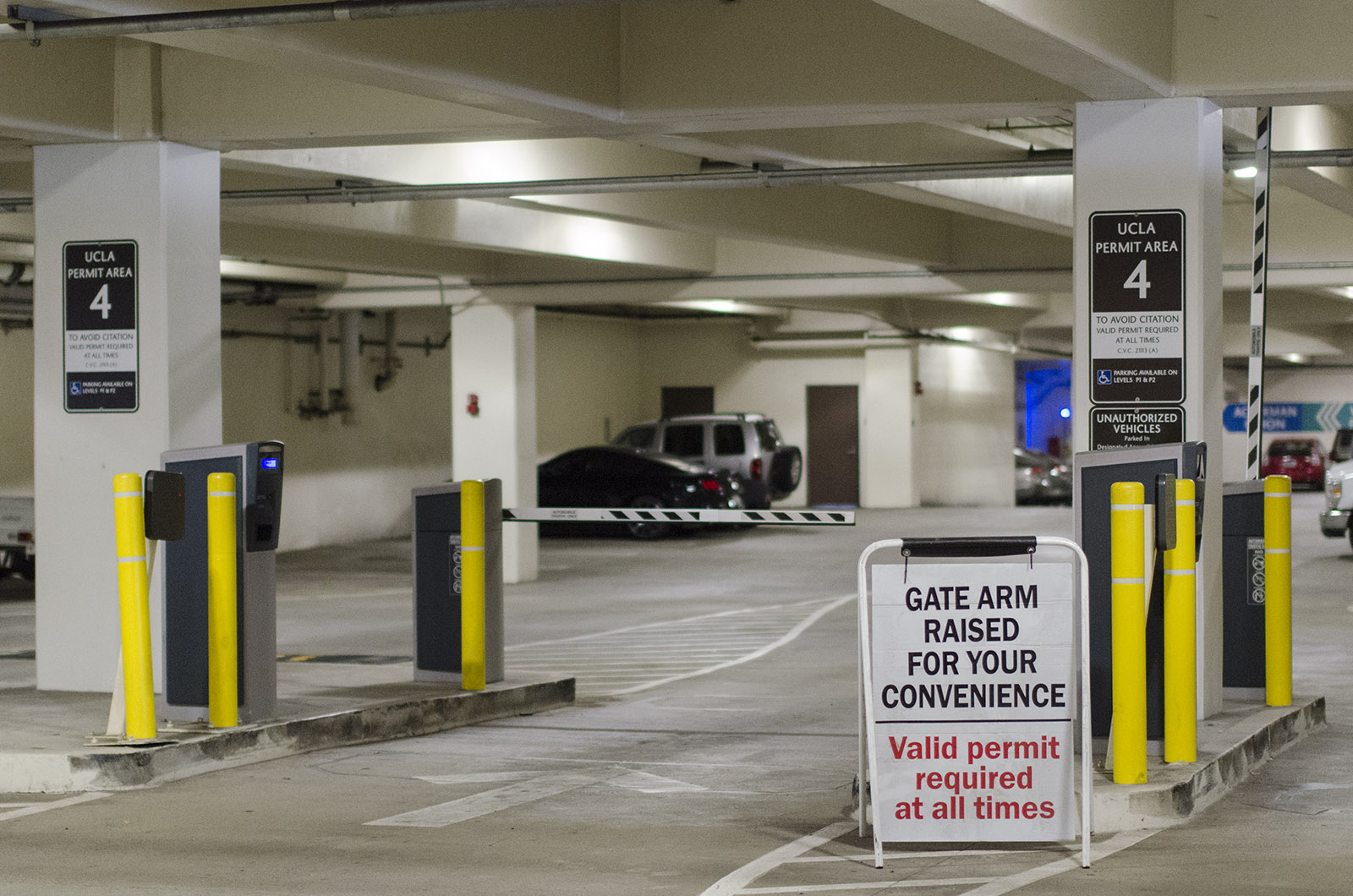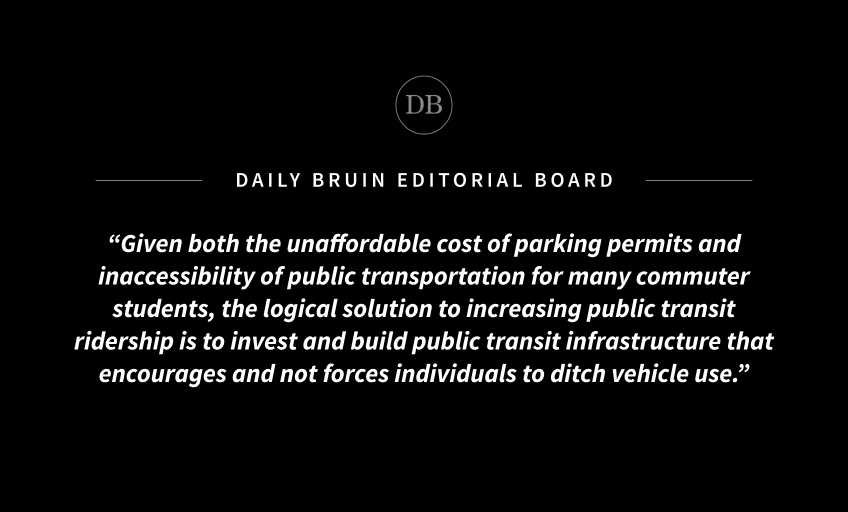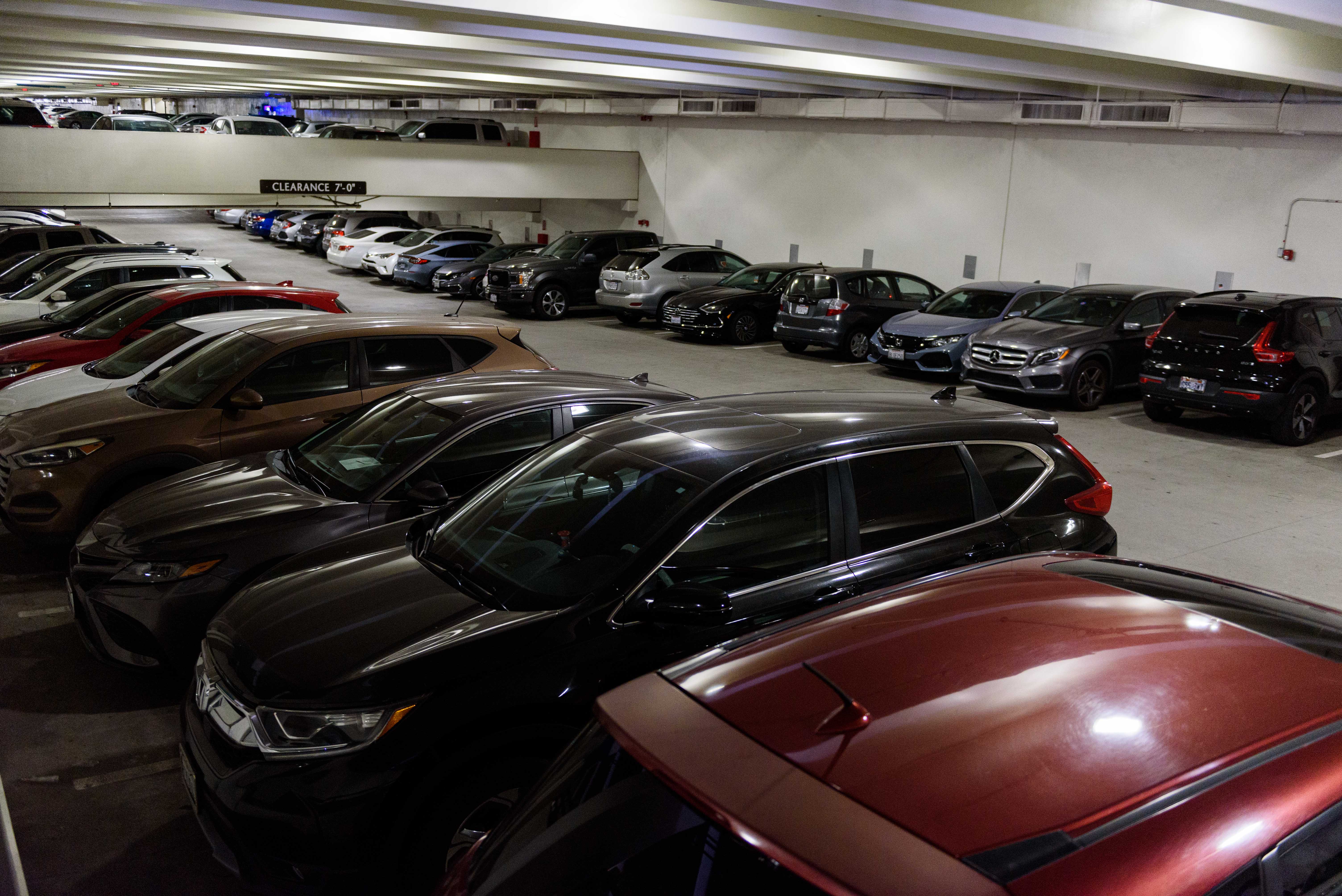Navigating the complexities of parking at UCLA
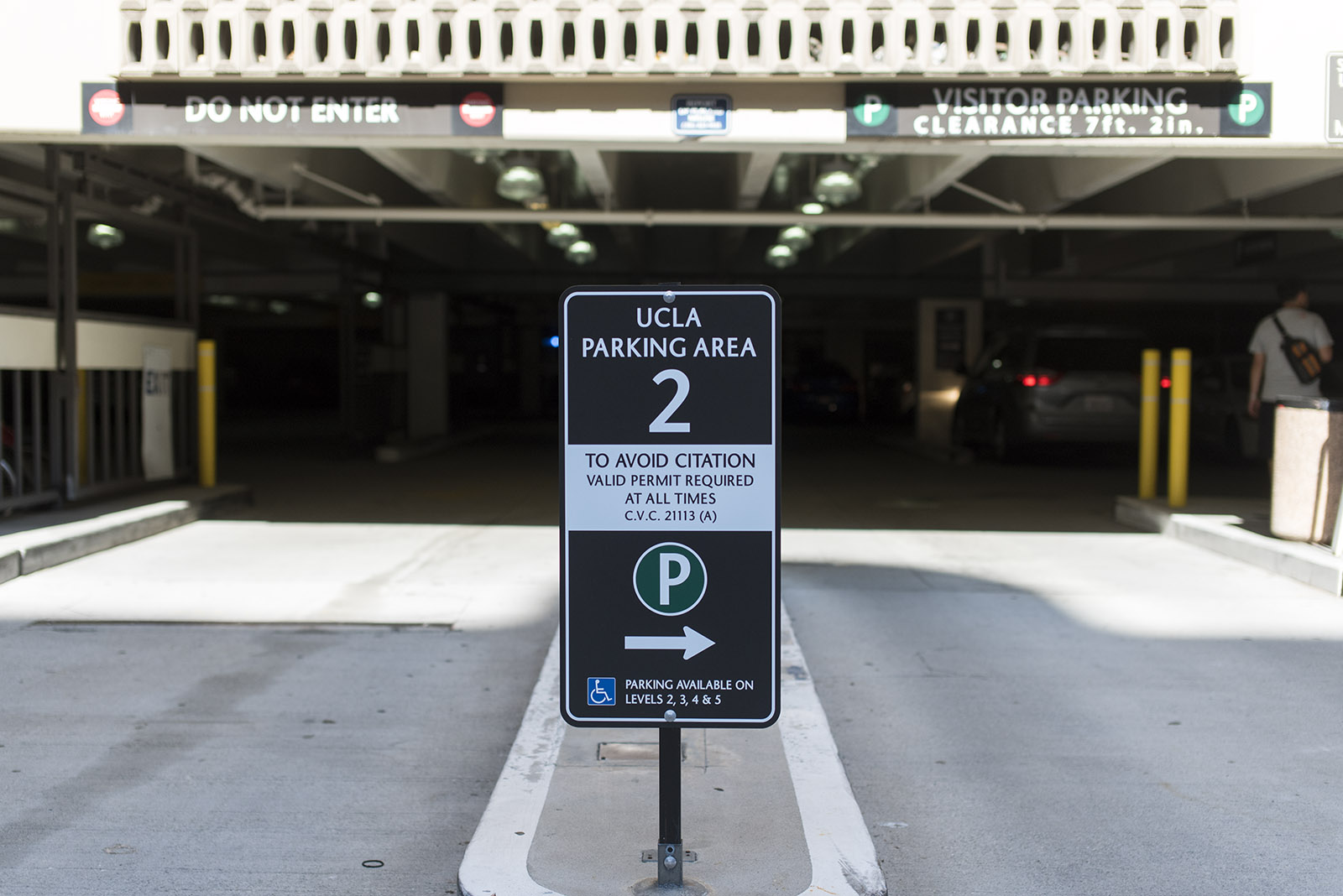
The entrance of a UCLA parking structure is pictured. With a total of 22,000 available parking spaces on campus, students and staff who drive to campus must navigate UCLA’s parking system. (Daily Bruin file photo)
By Jennifer Michel
April 2, 2025 7:15 p.m.
This post was updated April 3 at 11:00 p.m.
Difficulty finding a parking space is a notorious problem in Los Angeles, and UCLA is no exception.
According to the 2023 UCLA State of the Commute Report, more than 20,000 individuals drive to campus with a car on a regular basis. With thousands of undergraduate and graduate students, faculty and visitors searching for a place to park, the 22,000 total available parking spaces on campus do not always meet demands, UCLA Transportation spokesperson Rebecca Kendall said in an emailed statement.
Though more than 70% of undergraduate students do not take a car to commute, the availability of parking spaces on campus may affect transportation decisions for those who want or need to drive. Ahmad Thomas, a fourth-year sociology student, said he used to make a daily 30-minute commute by car to campus from his residence in Inglewood. He said he recently started taking public transportation to campus instead of driving because of the limited availability of parking spaces.
“Sometimes, it would take me up to 15 minutes to find a spot,” Thomas said. “I had 8 a.m.s, so it was difficult to drive and then still get to campus and then have to search for parking, especially on the days where I was running late.”
For students who currently drive to campus, UCLA has been operating on an ePermit system since 2019 that allows drivers to purchase different parking permits online. To obtain a permit, students can apply via the ePermit portal, where they can select their desired permit type and rank their preferred parking structures.
There are eight permit types for students, designated by varying needs such as for commuters, off-campus university housing residents and those who need overnight or weekend parking. Permits are lot-specific, and UCLA currently has 15 structures on campus, near the dorms and next to the university apartments.
“If a student is hoping to park in a certain location, they should list that location as their first-choice preference,” Kendall said in the statement. “However, parking permit locations are not guaranteed and will be based upon space availability.”
Kendall added that those with extenuating circumstances that necessitate having a car on campus can submit a separate student parking exemption request, which are considered on a case-by-case basis. Extenuating circumstances include child care, illness of a family member, academic need, job commute or veteran status.
Permits are only valid for a quarter at a time, and students are required to reapply and pay for parking on a quarterly basis. No accommodations or exceptions are made for students who fail to apply for parking before the deadline, according to the UCLA Transportation website.
Pilar Diaz, a third-year political science student living in an off-campus apartment, said one of the most challenging parts of getting her parking permit was keeping up with the application timeline, especially because the reapplication dates were early in the quarter, and the number of students on the website during these select times would cause the website to crash.
Priority for permits is given in the order of graduate students, eligible Regents Scholars, upperclassmen and underclassmen. The limited number spots on campus means that not everyone will receive a permit, Kendall added.
Another factor that impacts the permit process is cost. Per quarter, parking permits range from $181.17 for a weekend permit to $390.39 for individuals living in university housing. Commuter students, including those living in off-campus apartments, pay $312.18 per quarter.
Thomas said the cost of a parking permit may become a financial burden to students who also have to juggle the other costs of attending a four-year university.
“That is kind of expensive to get,” Thomas said. “For a moment, I was trying to get the daily permits, but they would fill up very quickly, and the parking structures that were closest to campus got filled up.”
Diaz also said she noticed some students living in off-campus apartments have turned to paying hourly for parking in the on-campus lots. She added that hourly parking may be a cheaper alternative for those who do not come to campus often, as prices range from $3 an hour to $16 for the whole day.
Kendall said commuter students who come to campus infrequently can also purchase daily, discounted parking, though it must be reevaluated each quarter and is dependent on available parking spaces.
Despite several options for on campus parking, some students may just opt for street parking in Westwood. Thomas said when he used to drive to campus, street parking often became the solution when he was running late – even with the risks.
“I would be very nervous that I would come back, and my car would be towed or I would get a ticket,” Thomas said. “Sometimes I would have to take the risk and do that because, like I said, I would drive around for about 15 to 20 minutes looking for a spot.”
Given the limited number of spots on campus, Kendall said UCLA Transportation has been actively working on implementing programs such as the Transportation Demand Management program, which has contributed to the decrease of drivers to campus by more than 5% between 2022 and 2023.
Though Thomas and Diaz said there is a need for more parking spots, Diaz also said she encourages students to consider the costs and benefits of driving, as well as alternative transportation methods.
“I don’t always think it’s worth it to walk 25 to 30 minutes to my singular 9 a.m. discussion … and so sometimes I’ll drive on those days,” Diaz said. “But I would also just really think about where your classes are and if it’s going to be worth it.”


